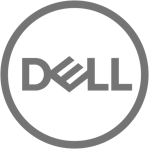Managed Hosting
Maximising Digital Performance: Strategies for Speed Optimisation on Websites and Platforms

We live in an age where instant gratification is the norm. Our wants and needs must be met in short order, which means the tools and services we use must make that possible. Anything that’s slow or jittery chips away at confidence in the process and the service provider. Speed is essential.
Walmart proved this when they improved conversions by 2% when they cut 1 second from their page load time. Mobify found that every 100 millisecond improvement on their site yielded a 1.11% increase in conversions. There are other areas where speed can also be highly beneficial:
- User experience. Whether you’re running a website or managing servers, speed underpins the user experience. This includes the experience on mobile devices that are often not as powerful as laptop or desktop computers, and therefore require lightweight content that doesn’t require a lot of processing power.
- Search engine ranking. Site speed is one of the most well-publicised ranking factors. Slower sites tend to rank more poorly than their speedy counterparts.
- Productivity. Whether it’s visitors who have to accomplish a task or staff who need to get their work done, speed is essential – but not just for faster task completion. Where speed is affected due to connectivity or performance issues
Ensuring the speed of mission-critical websites and platforms is crucial for maintaining user satisfaction, ensuring high performance, and supporting business operations. The actions performed to keep these sites and platforms fast will vary depending on the infrastructure, how it has been set up, and also the customer’s needs. Here are several strategies that can be implemented to ensure optimal speed and reliability:
Scalable hosting solutions
Choosing the right hosting package from the outset is essential. This will ensure that there are enough resources (storage, memory, and CPU) to keep the platform, site, or application running even during peak traffic times.
But choosing the right package is sometimes easier said than done. At Storm Internet, our solutions consultants help businesses of all sizes discover the right hosting solution for their needs – from basic hosting packages to complex private cloud setups.
Regular performance monitoring and testing
An optimal hosting solution isn’t a guarantee of consistent lightning-fast speeds. User actions, configuration errors, and increasing loads are just a few of the factors that can cause your site, server, or platform to slow down. Regular performance monitoring and testing is an essential part of the hosting process and identifies anomalies that can cause performance or security issues. These anomalies are then proactively addressed to ensure that they don’t become debilitating problems.
Load balancing
At some point running a single server – regardless of how powerful it is – becomes impractical. With load balancing traffic is distributed evenly across multiple servers to prevent a single server from becoming a bottleneck. The result is high availability and reliability.
Content Delivery Networks (CDN)
Content Delivery Networks cache website content and distribute this cached copy to servers around the world. Content is then served to visitors from a location closest to them. This can enhance content delivery speeds significantly. But they also come with a number of other benefits, such as alleviating server load and providing a layer of protection against online attacks.
Caching strategies
Much like CDNs, this strategy serves pre-saved content to repeat visitors. Browser caching, server-side caching, and application caching can be used to reduce server load and speed up content delivery. Exact statistics on caching will vary depending on the use case, system configuration, and caching strategy. Suffice it to say there is often a notable difference between the speed at which cached vs non-cached content is served.
Site / App optimisation
According to HTTP Archive, images constitute a fifth (21%) of a webpage’s weight. It makes sense, then, that optimising images as well as scripts, CSS files, images, and code can greatly improve content delivery speeds. Database optimisation shouldn’t be ignored either; anecdotal evidence suggests that an optimised database can speed up certain features by up to 50%. Database optimisation includes indexing, using efficient queries, and regular database maintenance to remove outdated or unnecessary data.
Site and database optimisation services are available through Storm Internet’s Partner network.
Conclusion
Optimising the performance of websites and platforms is not just advantageous—it’s essential. As illustrated by examples from leading companies like Walmart and Mobify, even minor improvements in page load times can have a significant impact on conversion rates, user satisfaction, and overall business success. Implementing strategies such as scalable hosting solutions, regular performance monitoring, load balancing, leveraging CDNs, and optimising site content and databases are critical steps in achieving optimal speed and reliability. By focusing on these areas, you can ensure you meet the demands of your users while maintaining a competitive edge in the digital marketplace.
With Storm Internet’s managed hosting services we’ll keep your platforms, apps, and sites running optimally 24/7. We monitor continuously for performance and security anomalies, and respond proactively to ensure that they don’t become problems that keep your digital assets from performing at their best..
Speak with a Storm Expert
Please leave us your details and we'll be in touch shortly
A Trusted Partner








